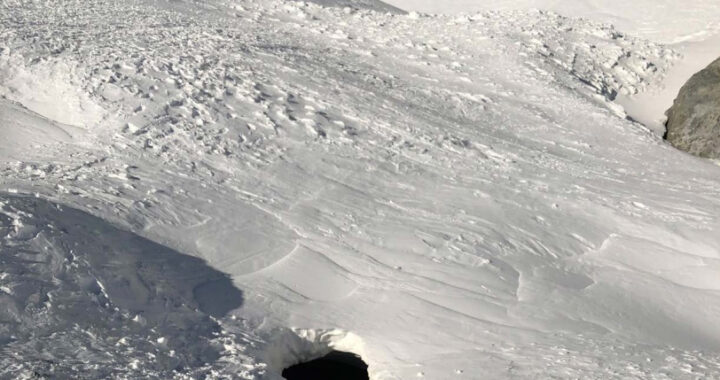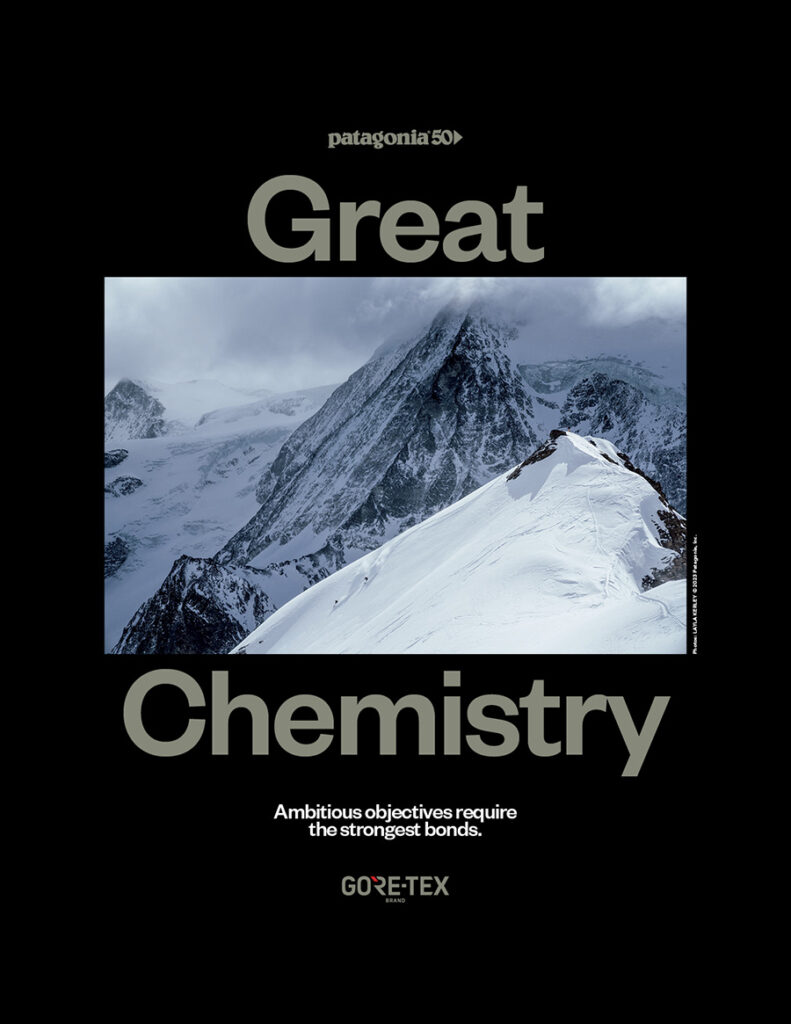Rick Lindfors-Ackerman – Meridian Editor in Chief
Mt. Hood, Ore. – Oregon’s Mt. Hood is one of the most popular peaks in the U.S., drawing climbers from across the world. But the mountain is a challenge for even experienced alpinists with its variable conditions and steep slopes. The teams that service the mountain, Portland Mountain Rescue and the Hood River Crag Rats, run numerous missions each year for injured subjects. The mountain also carries another threat, one that isn’t often thought of or seen by climbers: Fumaroles. Fumaroles are vents in the mountain that emit hot, toxic gasses. On January 26, 2022, Portland Mountain Rescue had to rescue a man who had fallen on the mountain and ended up stopping inside a fumarole.
Ben Swerdlow and his wife, Mary Ryan received the callout for the rescue around 1815 that night. It was PMR’s third callout for Mt. Hood in five days. A man was descending Mt. Hood on a snowboard when fell, sustaining serious leg injuries and ending up inside a fumarole near hogsback and devil’s kitchen at just over 10,000 feet elevation. The injured man’s climbing party dug themselves into the slope to wait for rescue. Although uninjured, they were exposed to the cold.
After arriving at Timberline Lodge Swerdlow, Ryan and PMR member Jan Roethle formed a hasty team and took a snowcat to the top of Palmer chairlift. They arrived at the top around 2040 and would climb the rest of the way to the subject. A second hasty team element would follow them. Swerdlow’s team made first contact with the subject around 2250.
The conditions at the fumarole were not ideal. The fumarole was heavily corniced and it was a 40 degree icy slope to get to the injured subject. The subject’s friends were also showing signs of hypothermia as they had been sitting and waiting in the elements. Outside, the fumarole area was in the mid 30’s with high winds. The subject himself was in a completely different environment. On the rocks inside the fumarole, the toxic fog warmed things to 100 plus degrees.
The hasty team started setting up rigging and figuring out a way to access the subject. Swerdlow and Ryan took care of the subject’s friends. They also set up anchors and took readings on the gas levels in the Fumarole. “With these fumarole rescues, [teams] really need to take them slow. We need to be evaluating gas levels, visibility [and] stability around the fumarole itself,” said Swerdlow. “You have these high gasses that are coming from the bottom. And the effect of that is heavily corniced lips.” They found that the gas readings for hydrogen sulfide were within the team’s safety tolerances. The level of gas coming from the vent can change depending on how much water is getting inside and being turned to steam. The team’s avalanche beacons would serve two purposes in the mission: allowing location and tracking during a potential avalanche and also allowing them to track the person going into the Fumarole where they would be shrouded by fog. Roethle volunteered to go in and treat the patient. No one can be ordered into a fumarole. “It’s not gonna be safe. We do all we can to mitigate it, but there can be spontaneous releases [of gas], mostly focused on hydrogen sulfide on Mt. Hood,” said Swerdlow.
Portland Mountain Rescue team members carry small respirators in their packs to use on Fumarole missions. They’re similar to what painters and construction workers wear.. Each respirator has vapor cartridges that filter out the toxic gasses. Along with the respirator, Roethle strapped a gas meter to the leg loop of his harness, allowing him to
get a warning if he was venturing into an area with higher concentrations of toxins before they reached his airway. The gasses are heavier than air, so they can pool in certain areas. “As you’re descending, you want to do that very slowly, allow your gas monitor to catch up and make sure you’re entering a relatively safe airspace,” said Swerdlow. The team also used a rope system that is specially designed for accessing someone in a fumarole that allowed a rescuer to descend and also be hauled out with minimal operators.
The plan was to go in, get the subject to better air, and then fully package them for extraction. The main medical concern was possible internal bleeding coming from such serious leg injuries. “There was a lot broken,” said Swerdlow. “That made things really difficult.” Roethle descended into the fumarole, with Swerdlow tracking him on his avalanche beacon. Roethle was able to get a harness around the subject and pull him upwards ten feet to some better quality air. But since there was only one rescuer in the fumarole, it was a difficult haul and painful ordeal for the patient. “You just hear this guttural scream through the fog and knew that wasn’t going to be working,” said Swerdlow.
As this was happening, a team consisting of Crag Rats members set up a backup rope system. Swerdlow requested a second rescuer to assist with securing the patient. Crag Rats member Culley Weisman volunteered and went down with a pre-rigged SKED and vacuum mattress. Packaging proved difficult due to the large rocks inside the fumarole. “It’s like going into a boulder field and trying to package someone,” said Swerdlow. The two rescuers were able to package the subject and used the initial rescue system to haul him up. “It was kind of a lucky transition,” said Swerdlow, “There wasn’t really a snow lip, it just blended right into the rock.”
Once out of the fumarole and onto a flat surface, rescuers transferred the subject to a litter, where a doctor and paramedic started working on him, giving him an IV and pain medications. The team then lowered him to the top of Palmer lift to a waiting snowcat. “It was very icy. Five people including myself dropped their trekking poles or ski poles and [the poles] just sailed away into oblivion,” said Swerdlow, saying the slope was far icier than he had seen before. Once the patient got to the snowcat, rescuers “survival skied” the remaining distance to Timberline, arriving around 0345.
Image captions
A fumarole on Mt. Hood (Clackamas County Sheriff’s Office)



